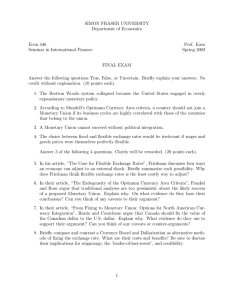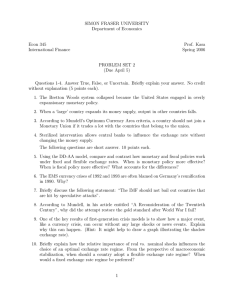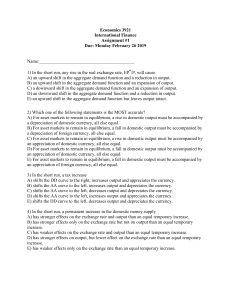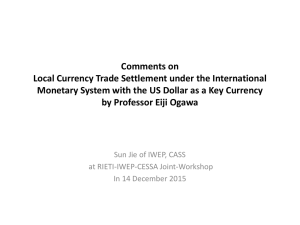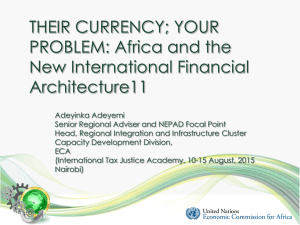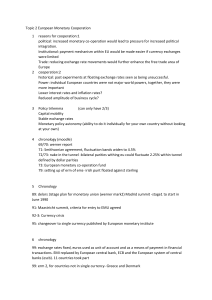Lecture notes 20 November 21: Optimum Currency Areas
advertisement
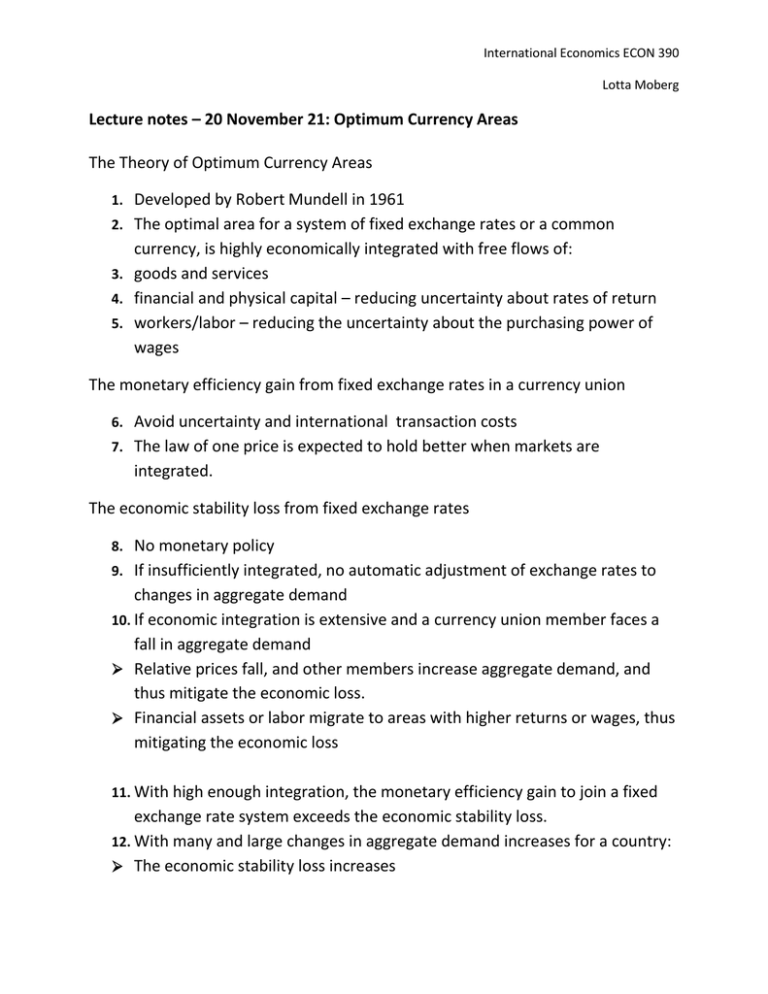
International Economics ECON 390 Lotta Moberg Lecture notes – 20 November 21: Optimum Currency Areas The Theory of Optimum Currency Areas 1. Developed by Robert Mundell in 1961 2. The optimal area for a system of fixed exchange rates or a common currency, is highly economically integrated with free flows of: 3. goods and services 4. financial and physical capital – reducing uncertainty about rates of return 5. workers/labor – reducing the uncertainty about the purchasing power of wages The monetary efficiency gain from fixed exchange rates in a currency union 6. Avoid uncertainty and international transaction costs 7. The law of one price is expected to hold better when markets are integrated. The economic stability loss from fixed exchange rates 8. No monetary policy 9. If insufficiently integrated, no automatic adjustment of exchange rates to changes in aggregate demand 10. If economic integration is extensive and a currency union member faces a fall in aggregate demand Relative prices fall, and other members increase aggregate demand, and thus mitigate the economic loss. Financial assets or labor migrate to areas with higher returns or wages, thus mitigating the economic loss 11. With high enough integration, the monetary efficiency gain to join a fixed exchange rate system exceeds the economic stability loss. 12. With many and large changes in aggregate demand increases for a country: The economic stability loss increases International Economics ECON 390 Lotta Moberg The European Union 13. A system of international institutions with 28 member countries that started in 1957 14. European Parliament: Elected by citizens of member countries 15. Council of the European Union: Appointed by governments of the member countries 16. European Commission: Executive body 17. Court of Justice: interprets EU law 18. European Central Bank: Monetary policy through the European System of Central Banks The European Monetary System 19. Fixed exchange rates in 1979 20. The euro was adopted in 1999 21. EU members adopted the euro for 4 main reasons Unified market Political stability A belief that the system would moderate German influence Elimination of the possibility of devaluations Is the EU an Optimum Currency Area? 22. Most EU members export from 10% to 20% of GDP to other EU members 23. Trade between U.S. states is much larger 24. Prices of goods and services are not the same across markets 25. Low regional migration 26. But capital mobility without labor mobility can make the economic stability loss greater. After a reduction of aggregate demand in a particular EU country, financial assets are easily moved out while labor is stuck. 27. Transfers between euro countries could offset the economic stability loss 28. But the EU has much less such fiscal federalism than the U.S.

